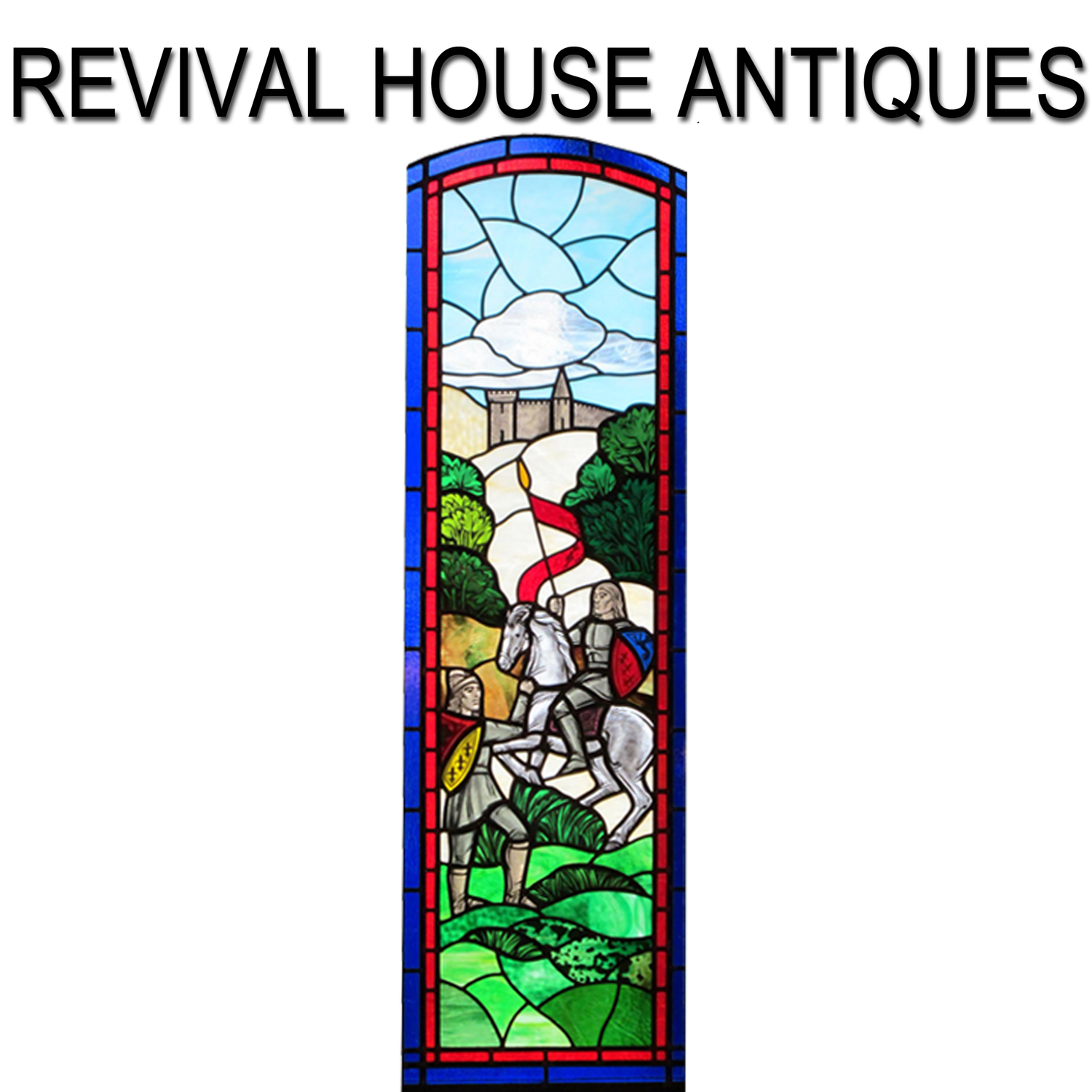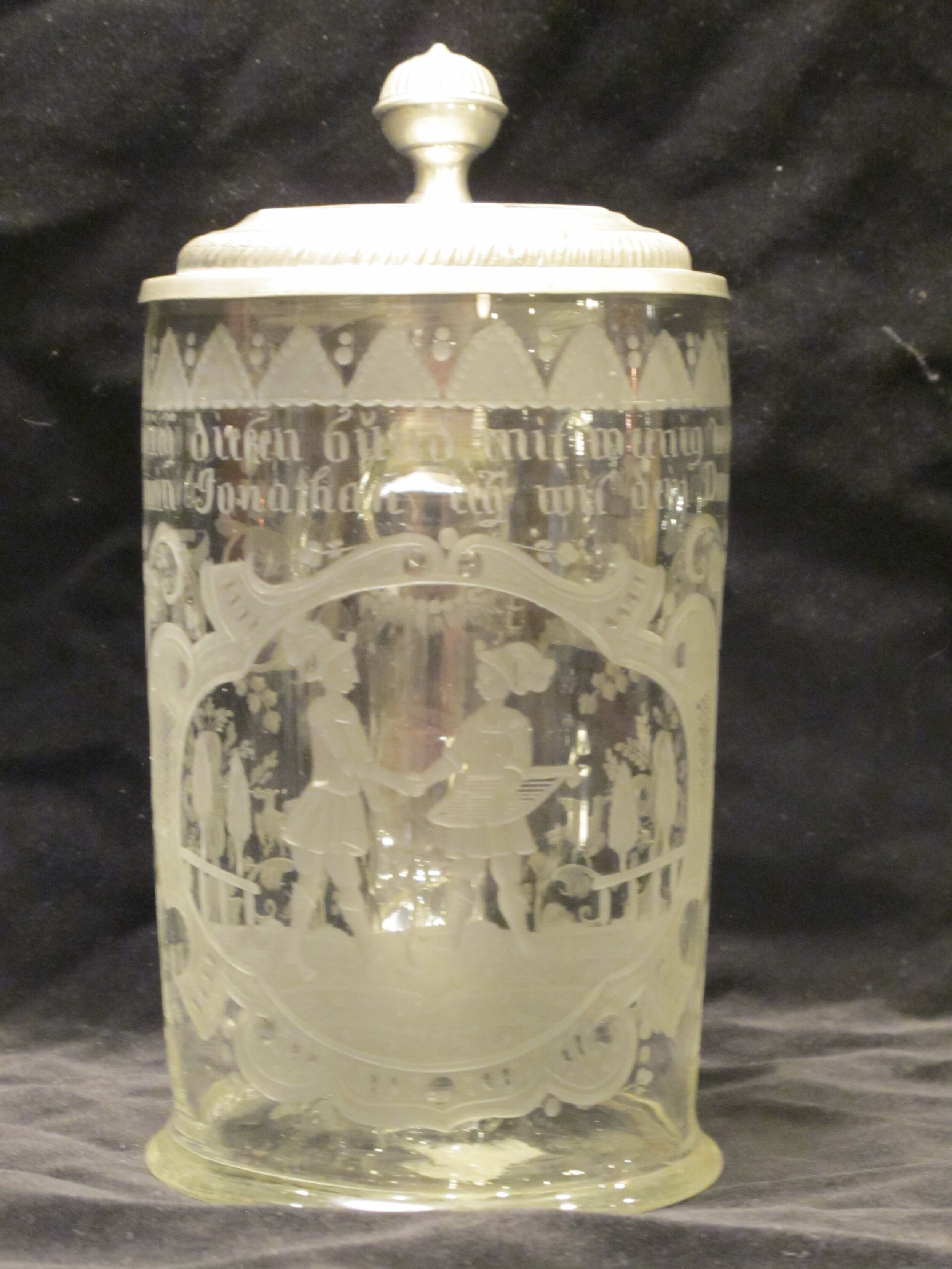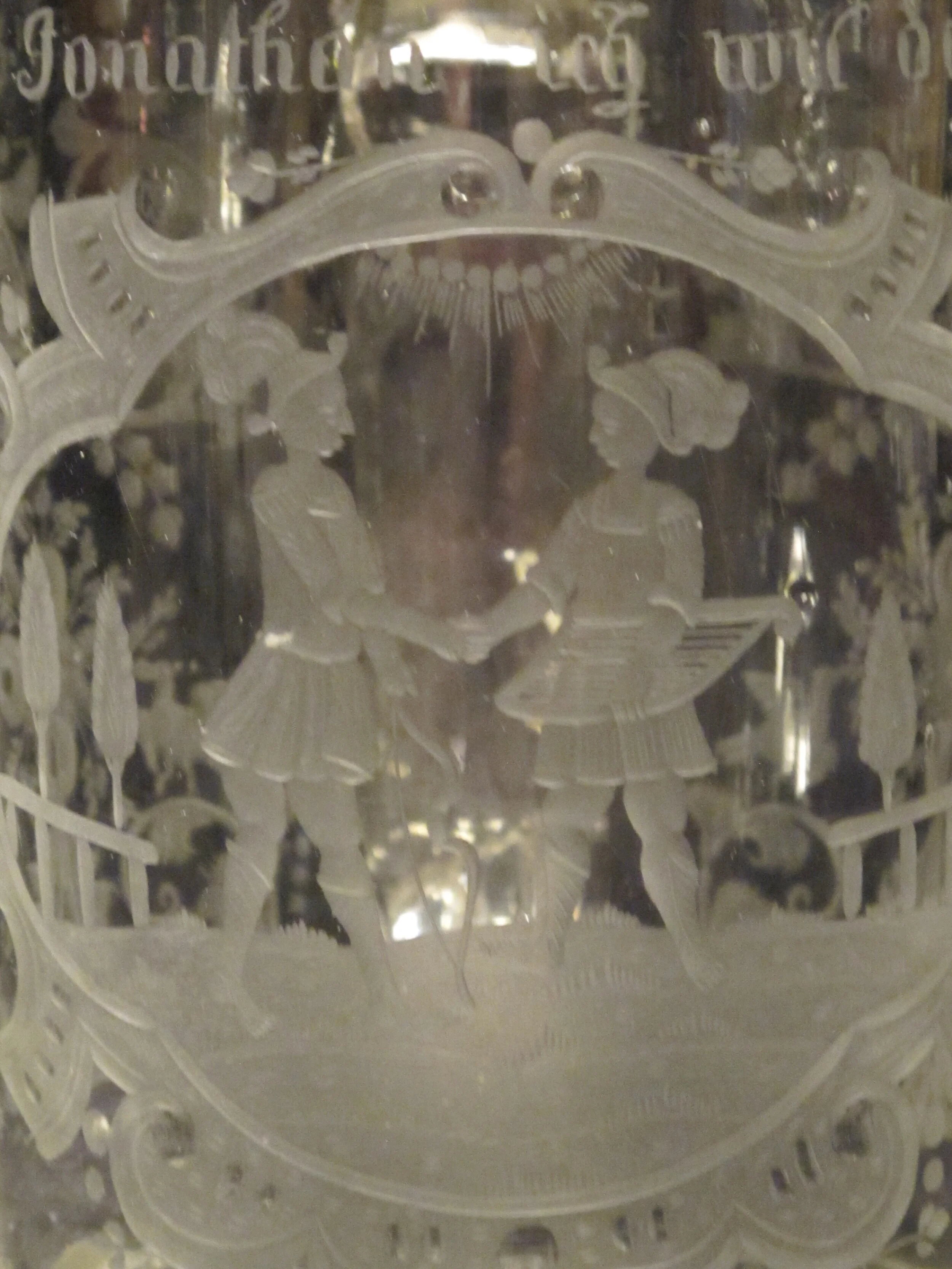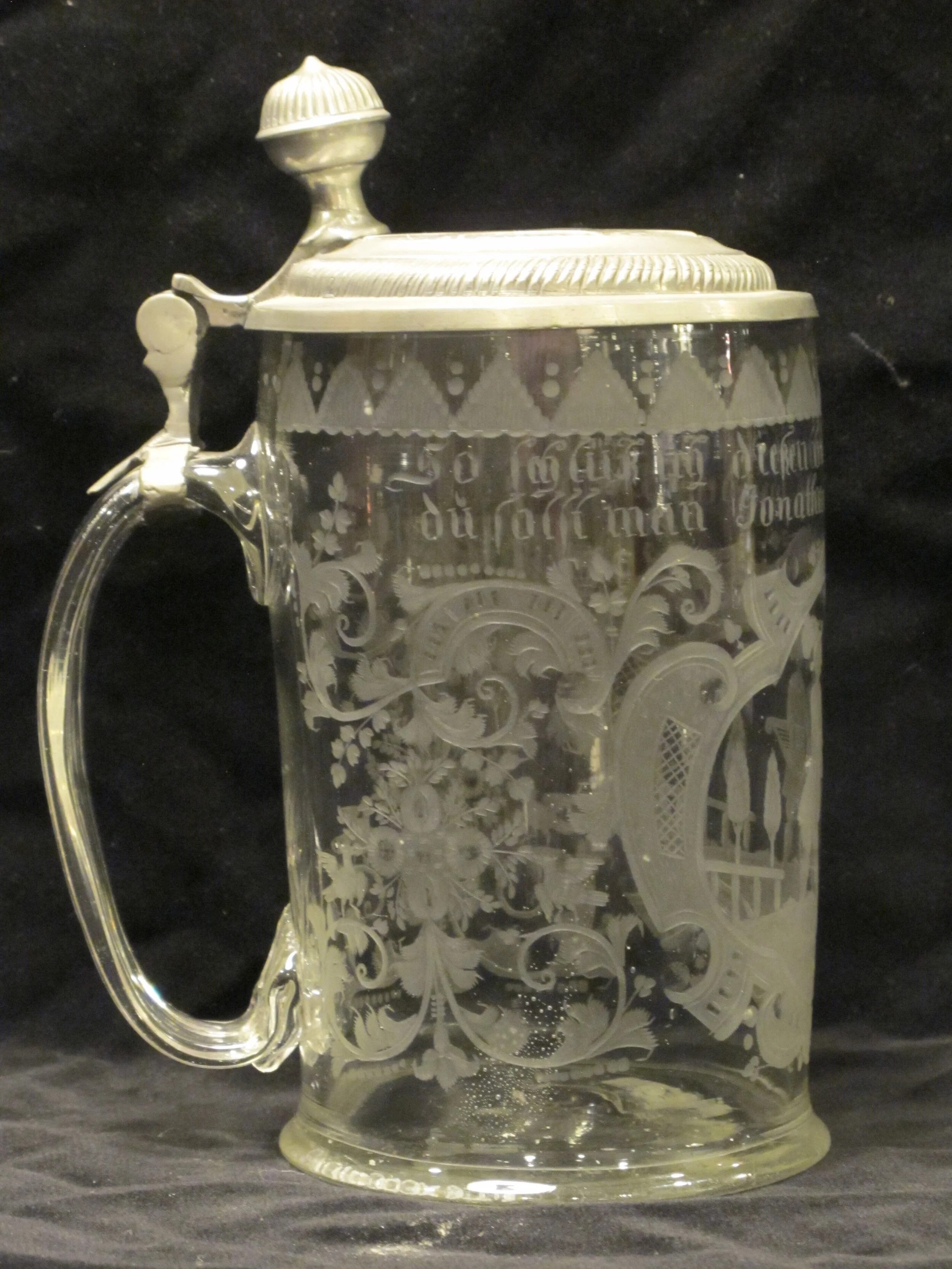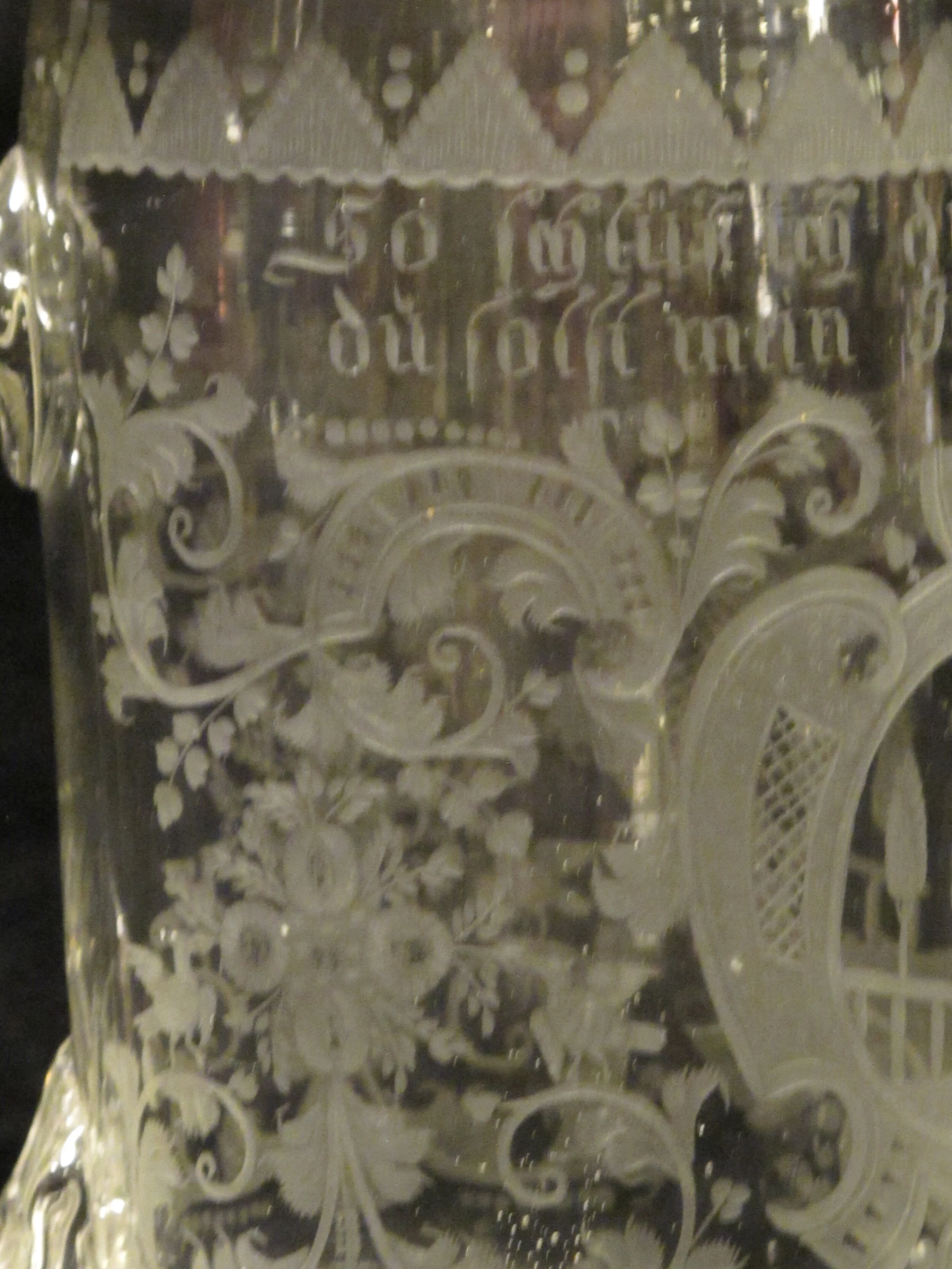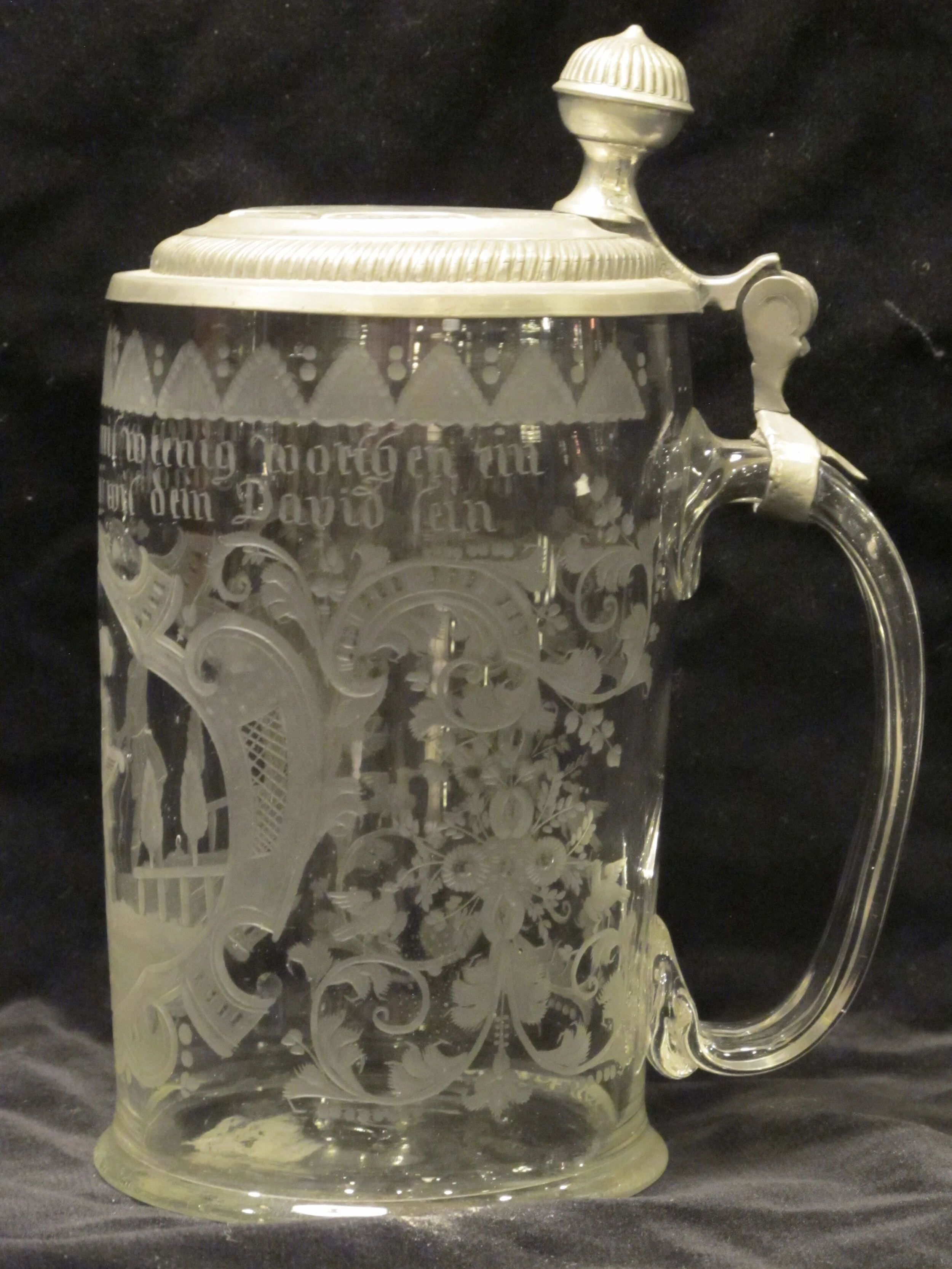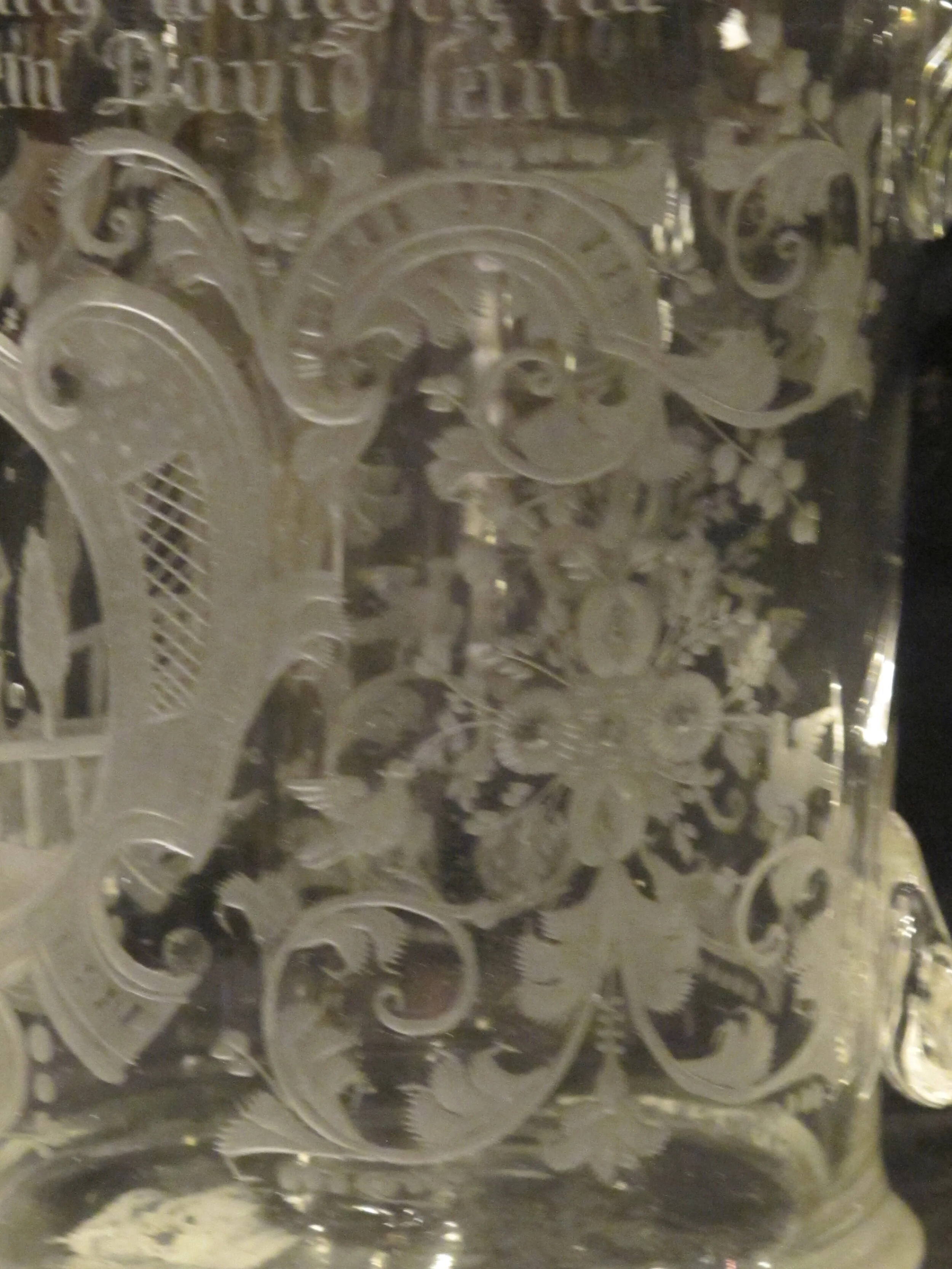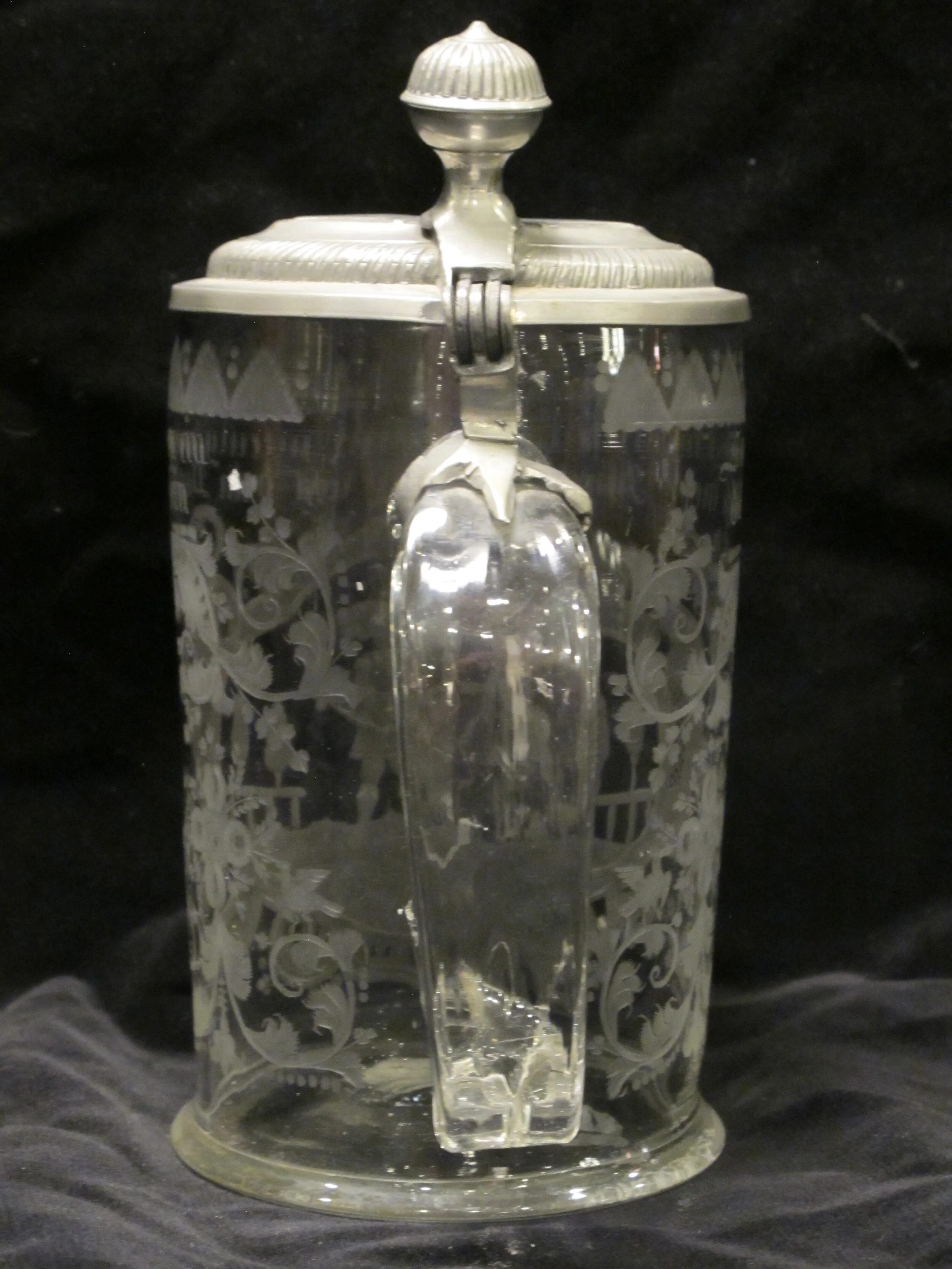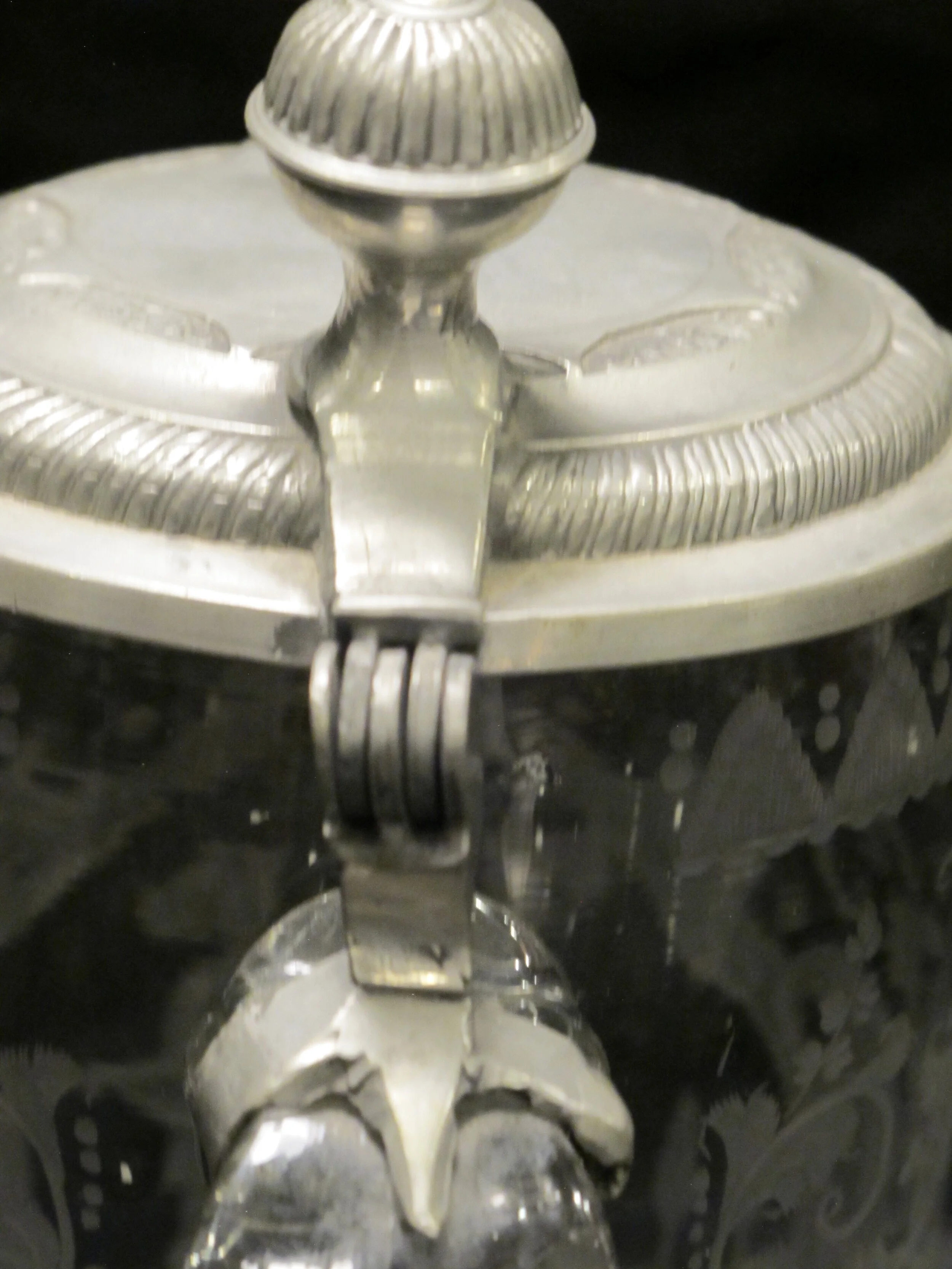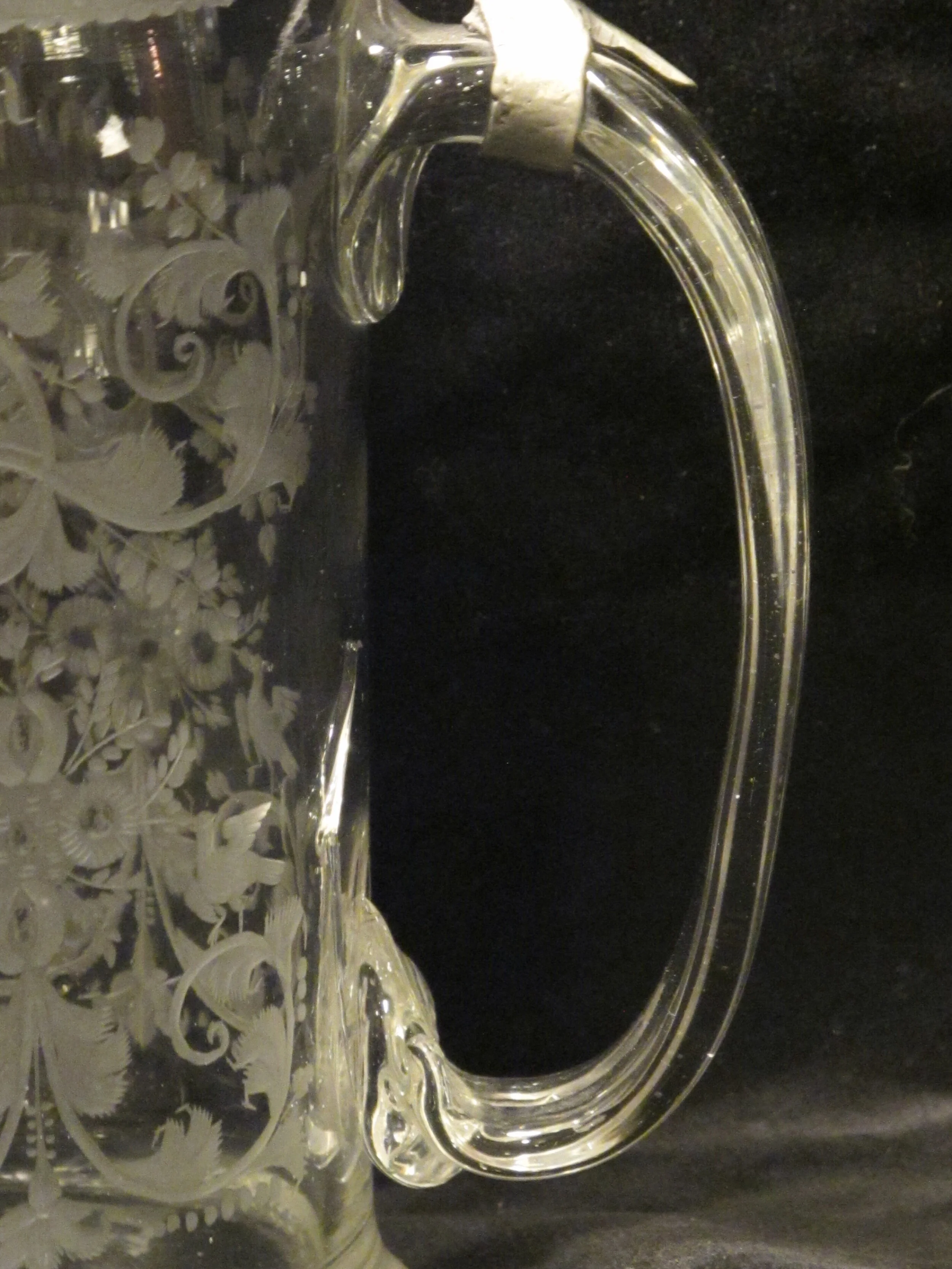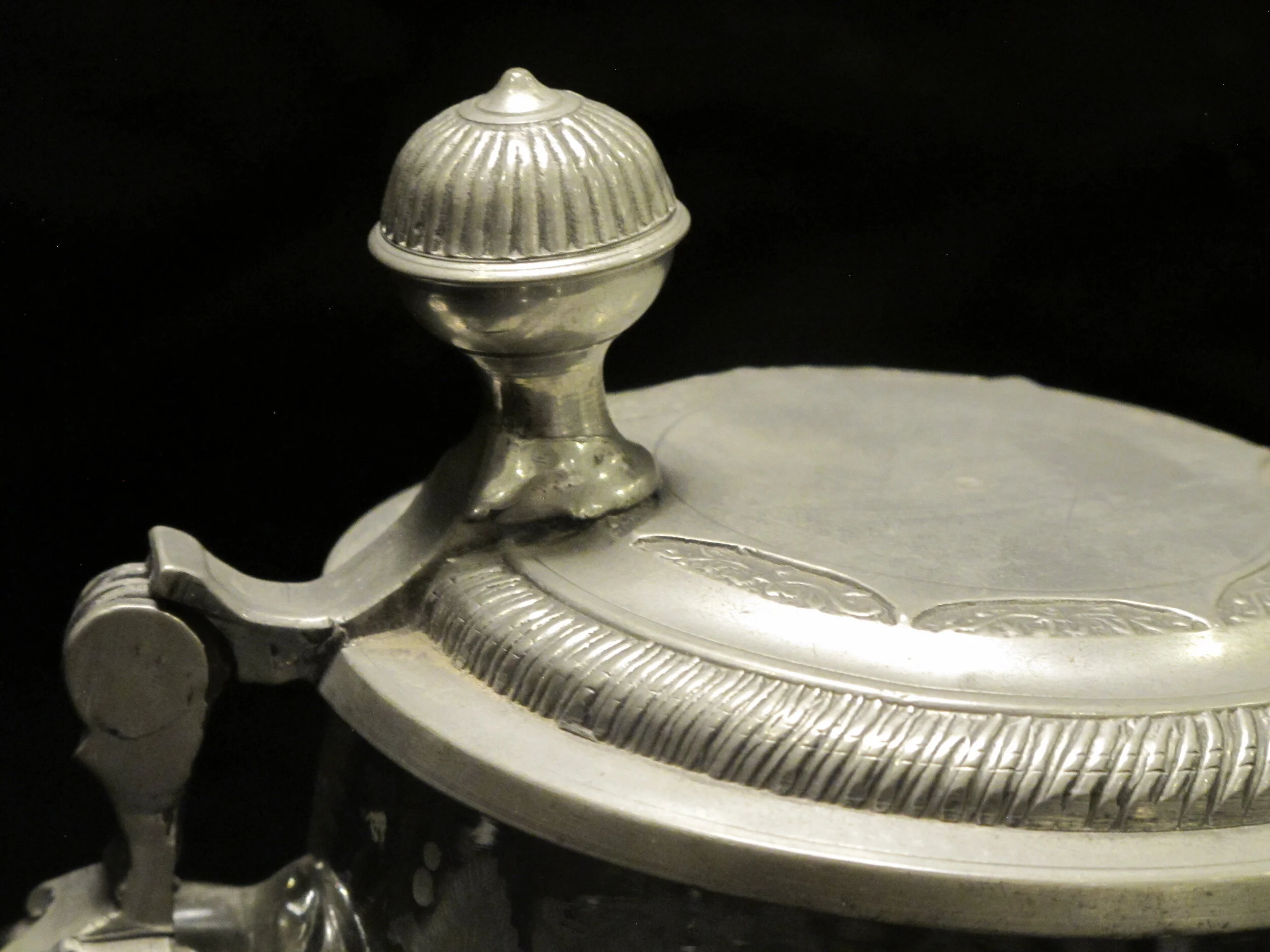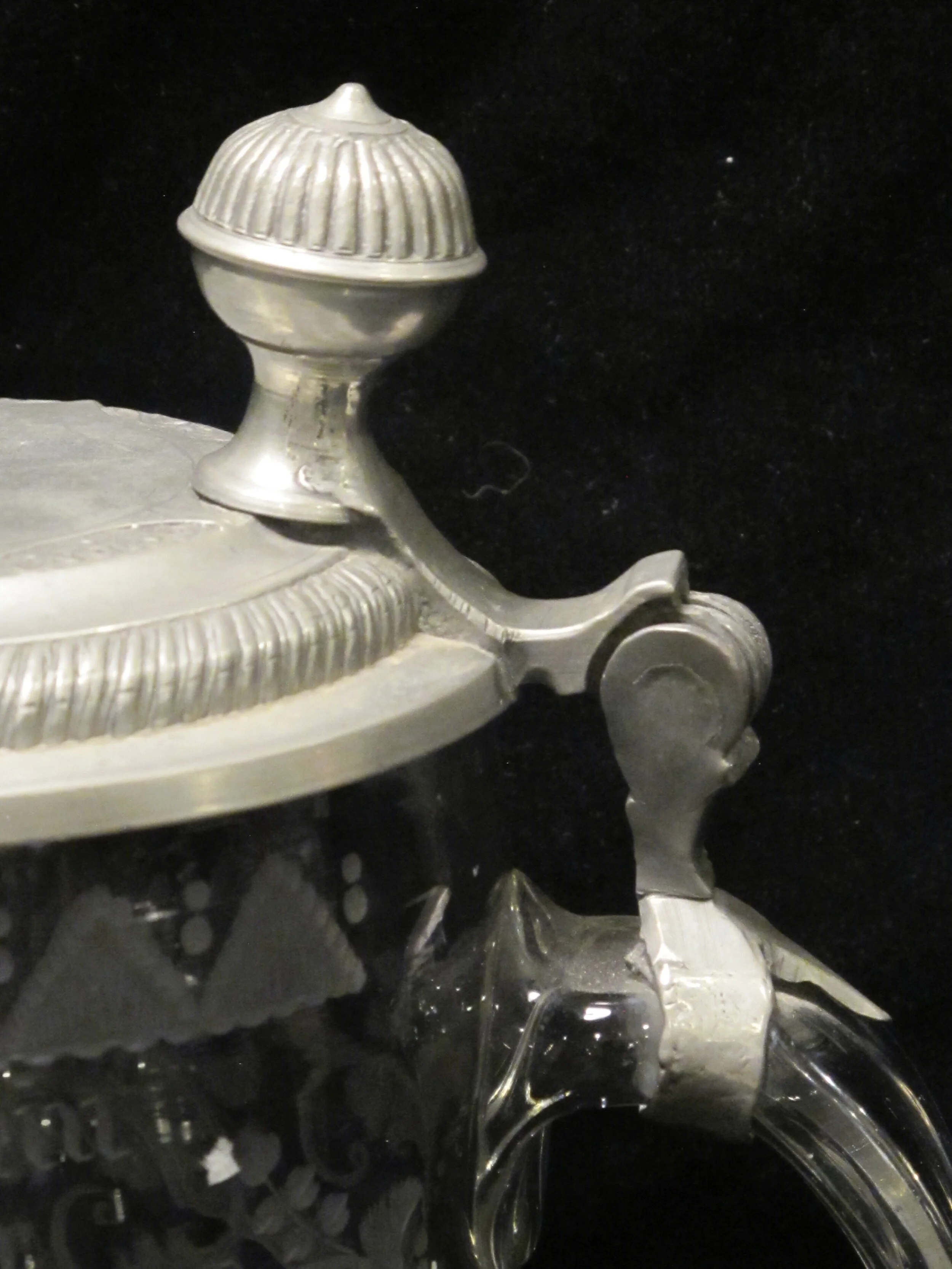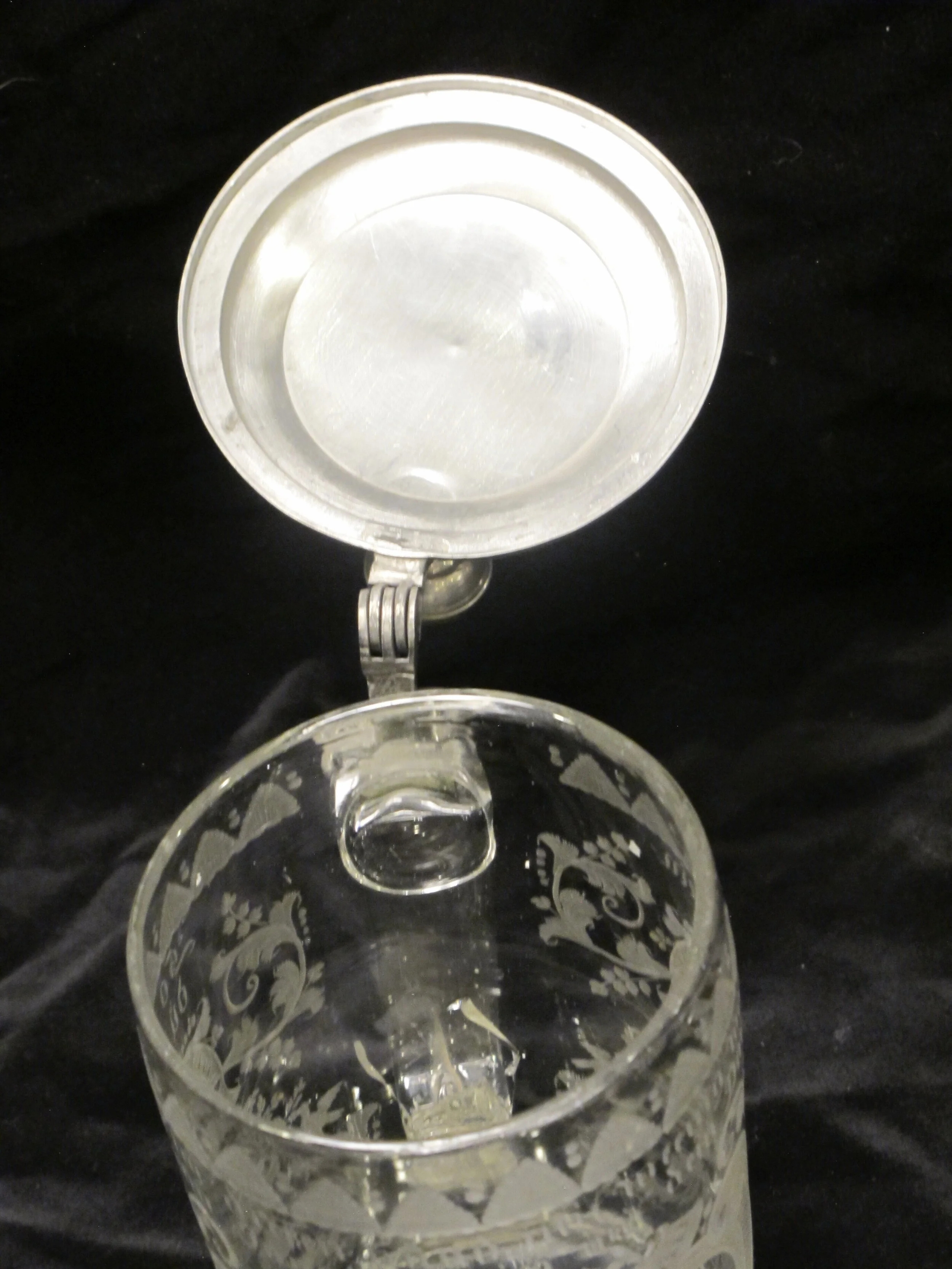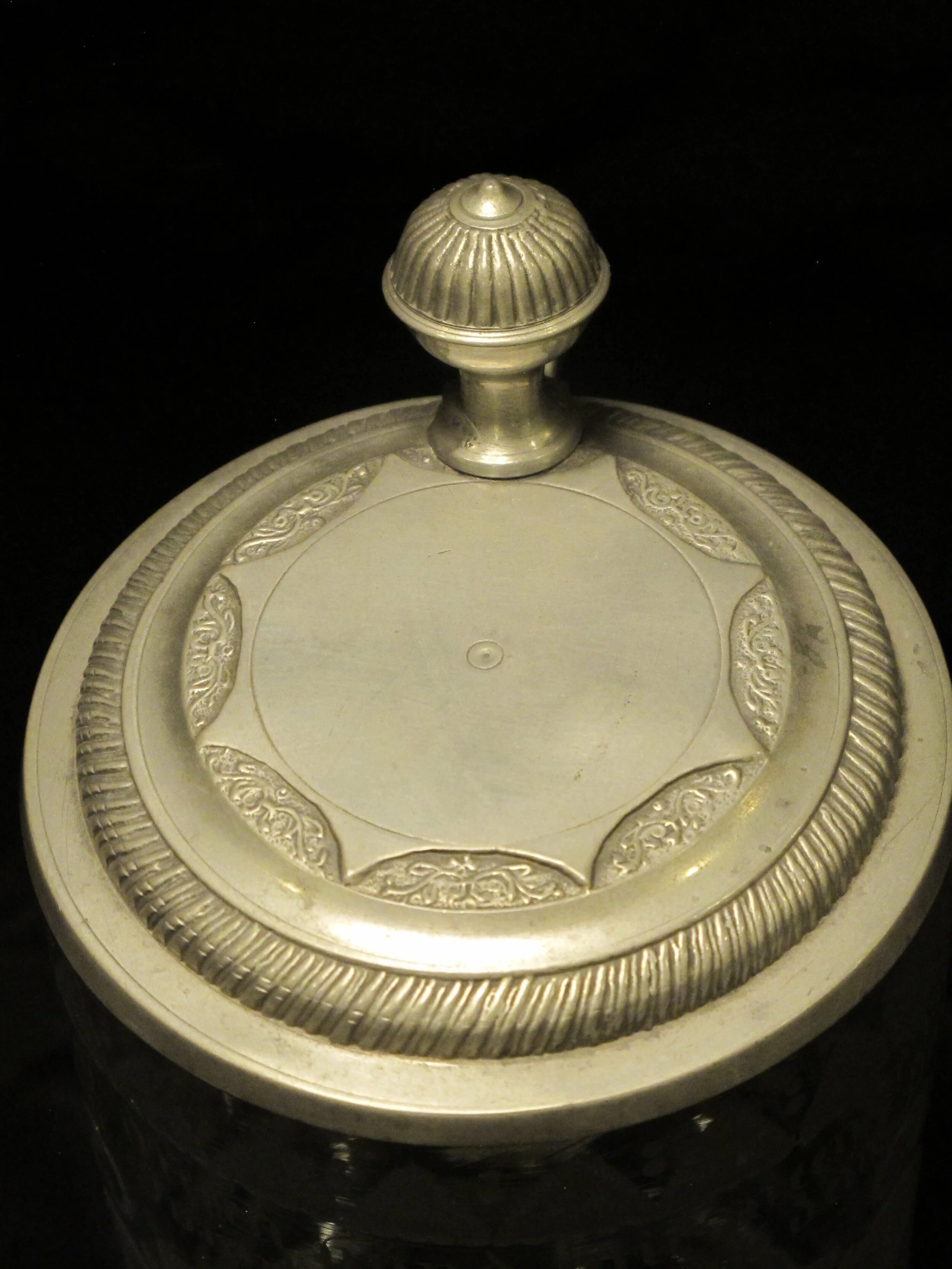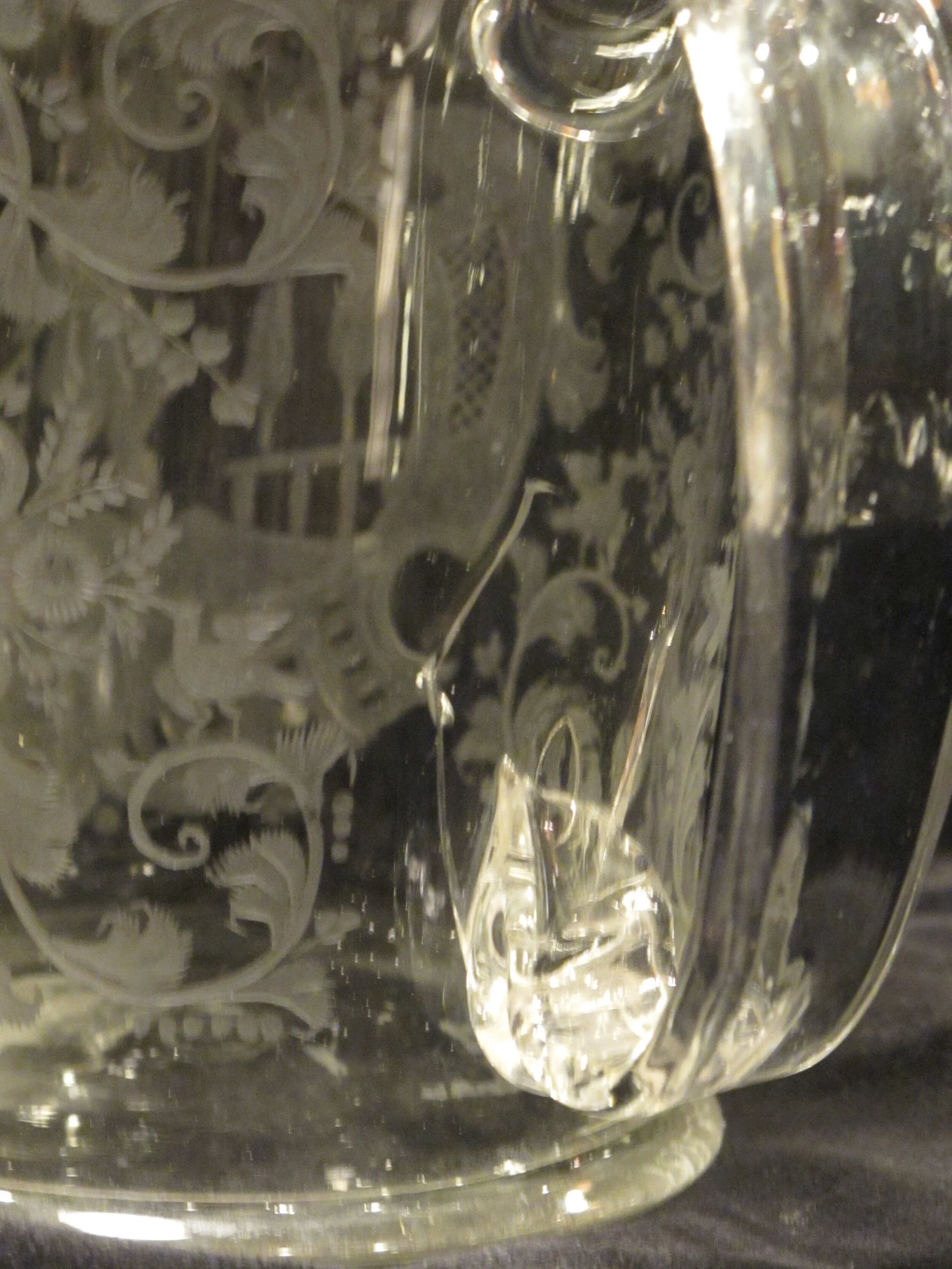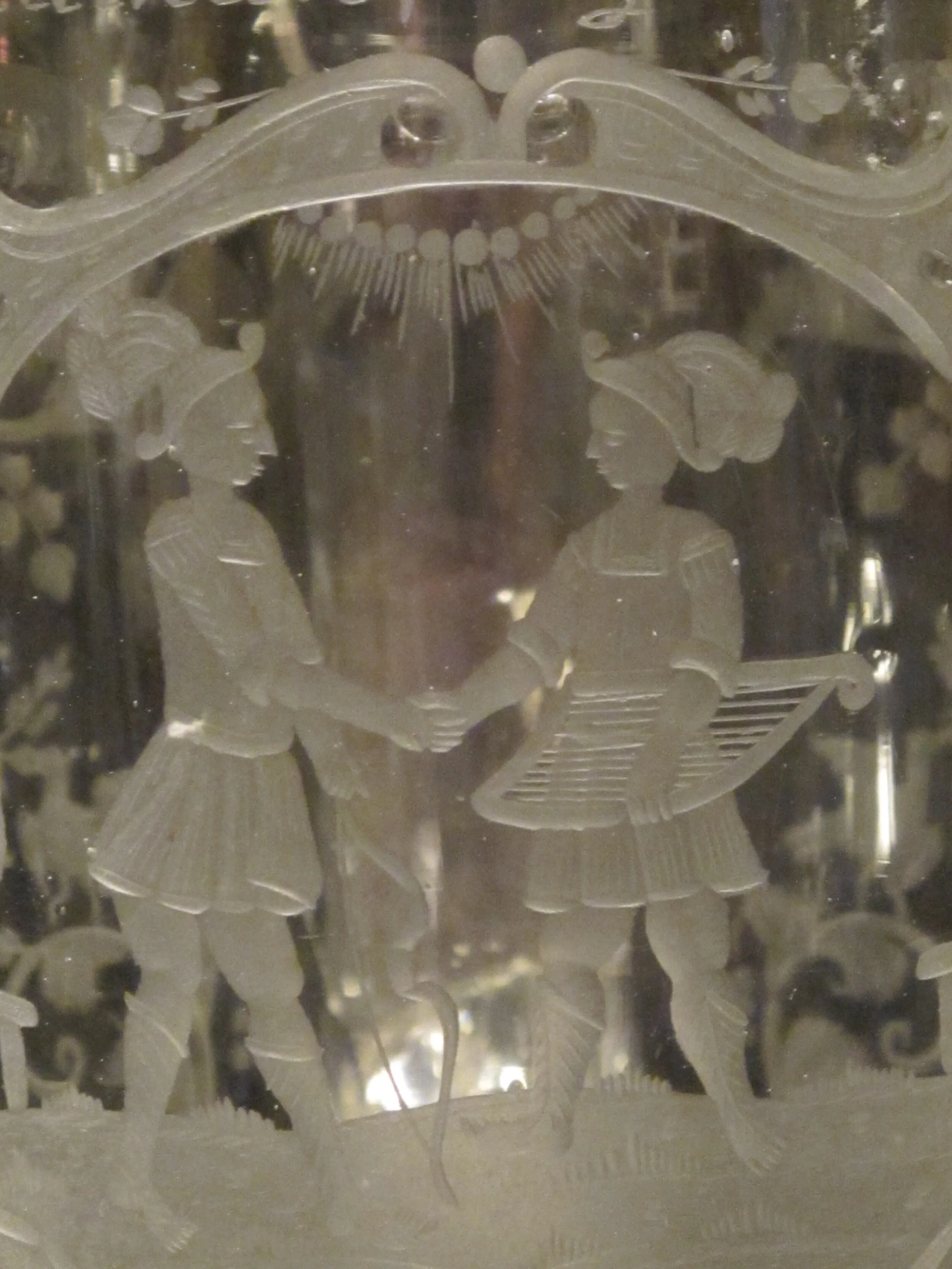18th Century Wheel-Engraved Glass Beer Stein with Biblical Figures and Phrase
18th Century Wheel-Engraved Glass Beer Stein with Biblical Figures and Phrase
This 1/2L 18th Century glass beer stein, circa 1740-1760 is copper wheel engraved and depicts two biblical figures; Jonathan, the oldest son of King Saul and David, prior to becoming King.
The stein shows Jonathan holding a bow and David with a lyre, both shaking hands, standing on a mound. Surrounding the central image are beautiful scrolling elements. The stein features what appears to be the original pewter lid and thumb lift. The handle is the thin strap type handle predominant in the mid 18th Century.
In order to understand the translation on the stein, it is important to understand these two individuals and their relationship. The following excerpt is from Encyclopedia Brittanica:
Jonathan, in the Old Testament (I and II Samuel), eldest son of King Saul; his intrepidity and fidelity to his friend, the future king David, make him one of the most admired figures in the Bible. Jonathan is first mentioned in I Sam. 13:2, when he defeated a garrison of Philistines at Geba. Later (I Sam. 14), Jonathan and his armour bearer left Saul’s army at Geba and captured the outpost at Michmash. The Israelites then attacked and defeated the Philistines.
Possibly because of his piety, Saul then ordered a fast for one day, but the absent Jonathan was unaware of the order and ate wild honey. When Saul requested information about the war from God and there was no answer, Saul blamed the silence on Jonathan’s breaking of the fast and would have killed him had not his own soldiers ransomed Jonathan.
When David became a member of Saul’s household and won many victories against the Philistines, he and Jonathan became close friends. After Saul jealously turned against David, Jonathan attempted to reconcile them, but he was only briefly successful. Saul tried to enlist Jonathan’s aid to kill David, but Jonathan remained David’s friend and warned him of Saul’s anger so that David hid. When the two met for the last time in the Wilderness of Ziph, they planned that David would be the next king of Israel and Jonathan his minister (I Sam. 23:16–18).
More recent and modern interpretations as described in Wikipedia suggest that there may have been a more intimate relationship between the two men.
The phrase on the stein in old German reads:
So schlüß ich diesen bund mit weenig worthen ein
du solst mein Jonathan ich wil dein David sein
Transposed into modern German:
So schließ ich diesen bund mit wenig worthen ein
du sollst mein Jonathan, ich will dein David sein
English translation:
Thus I cement this bond with few words
you shall be my Johnathan, I want to be your David
(alternatively, you shall be my friend, and I, yours)
This stein was likely given as a gift to a very good friend in commemoration of their friendship.
The stein measures approximately 8” tall to the top of the pewter thumb lift and has a diameter at the base of 4” excluding the handle.
There are two vertical cracks on the body of the stein at the point of handle attachment, which is common and even typical in steins with this type of handle, which occurs as the hot glass from the handle was attached to the cooled stein body. The cracks have spread slightly (see photo).
